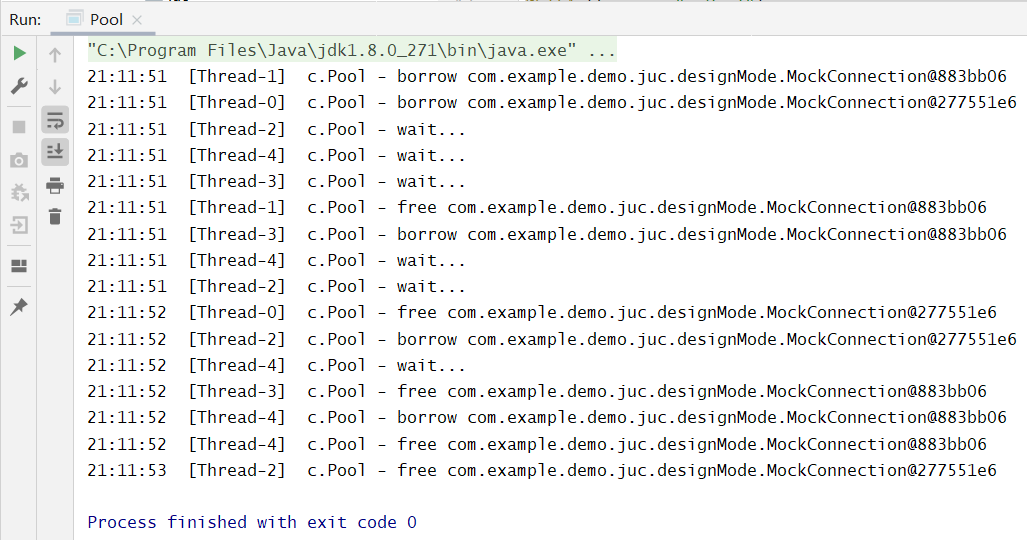享元模式(Flyweight Pattern)主要用于减少创建对象的数量,以减少内存占用和提高性能。这种类型的设计模式属于结构型模式,它提供了减少对象数量从而改善应用所需的对象结构的方式。享元模式尝试重用现有的同类对象,如果未找到匹配的对象,则创建新对象。该模式主要用于解决:在有大量对象时,有可能会造成内存溢出,我们把其中共同的部分抽象出来,如果有相同的业务请求,直接返回在内存中已有的对象,避免重新创建。

比如,池化技术就是一种享元模式的应用,比如下面的自定义线程池:
@Slf4j(topic = "c.Pool")public class Pool {// 1. 连接池大小private final int poolSize;// 2. 连接对象数组private final Connection[] connections;// 3. 连接状态数组 0 表示空闲, 1 表示繁忙private final AtomicIntegerArray states;// 4. 构造方法初始化public Pool(int poolSize) {this.poolSize = poolSize;this.connections = new Connection[poolSize];this.states = new AtomicIntegerArray(new int[poolSize]);for (int i = 0; i < poolSize; i++) {connections[i] = new MockConnection("连接" + (i + 1));}}// 5. 借连接public Connection borrow() {while (true) {for (int i = 0; i < poolSize; i++) {// 获取空闲连接if (states.get(i) == 0) {//CAS操作,线程安全if (states.compareAndSet(i, 0, 1)) {log.debug("borrow {}", connections[i]);return connections[i];}}}// 如果没有空闲连接,当前线程进入等待synchronized (this) {try {log.debug("wait...");this.wait();} catch (InterruptedException e) {e.printStackTrace();}}}}// 6. 归还连接public void free(Connection conn) {for (int i = 0; i < poolSize; i++) {if (connections[i] == conn) {states.set(i, 0);synchronized (this) {log.debug("free {}", conn);this.notifyAll();}break;}}}public static void main(String[] args) {Pool pool = new Pool(2);for (int i = 0; i < 5; i++) {new Thread(() -> {Connection conn = pool.borrow();try {Thread.sleep(new Random().nextInt(1000));} catch (InterruptedException e) {e.printStackTrace();}pool.free(conn);}).start();}}}class MockConnection implements Connection {// 实现略}
运行结果:

